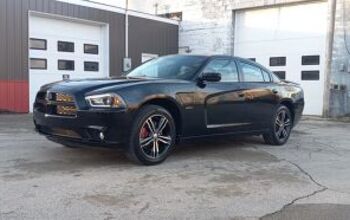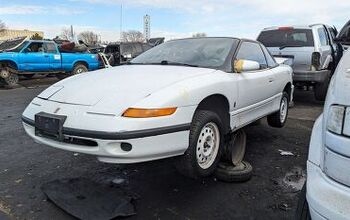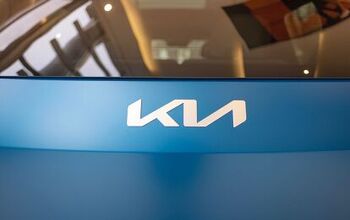Toyota Expects a Quarter of Prius Customers to Choose AWD-e, but 25 Percent of Prius Is Not What It Used to Be
As America’s new vehicle market shifts to vehicles with four driven wheels, greater ride height, and dog-friendly tailgates, it seems more than sensible for the Toyota Prius to take part in some community outreach.
The Prius, America’s 10th-best-selling car just a decade ago, can keep doing the same thing over and over again while expecting different results. Or, the Prius can make a significant change – via available “independent electric, magnet-less rear motor” – to offer all-wheel drive, one of the feature sets that’s drawing car buyers away from cars.
And that’s exactly what Toyota has done for the otherwise refreshed 2019 Prius ( reviewed last week by our own Matt Posky). In a manner of speaking, Toyota expects big things from the Prius AWD-e: 25 percent of Prius customers, to be precise.
But one-fourth of all Prius volume is not what it used to be. In fact, it’s a far cry from what it used to be. A mere fraction of what it used to be. One-quarter of all Prius volume will make the Prius AWD-e barely more common than the Alfa Romeo Stelvio.
For the Prius, despite a market that’s much more open to green vehicles as a general concept, times have changed, and not in its favour. In 2007, for instance, the introduction of an AWD Prius that would earn 25 percent of all Prius volume would have resulted in over 45,000 annual sales in the United States. But sales of the Prius – by which we mean the core Prius model, not the C or V or Prime – have plunged 60 percent since 2007. In the last half-decade alone, Prius sales are down by half, a startling drop attributed to a number of factors.
COMPETITION
In bites and pieces, little by little, vehicles such as the Ford C-Max, Hyundai Ioniq, and Honda Insight have eaten into the Prius’s pie. Then there are the hybrid versions of mainstream cars, from the Ford Fusion and Kia Optima to Toyota’s own Camry.
Throw in a nascent EV segment, plus a new wave of attention-grabbing green cars, and the Prius’s initial thunder is long since lost. After peaking at over 181,000 sales in 2007, Toyota is on track to generate around 50,000 Prius sales in the U.S. in 2018. (From a high of 236,655 sales in 2012, the entire Prius lineup won’t likely top the 90,000 mark in 2018.)
CONSUMPTION
In 2018, two of three models in the Prius lineup are rated at 52 mpg in combined driving. With average fuel prices at $2.42/gallon and big leaps in ICE efficiency, a new Prius saves just $443 compared with a new CR-V over the course of a year.
You won’t be wrong in suggesting that the Prius and CR-V aren’t direct competitors. But don’t ignore the fact that Prius sales tumbled 60 percent since 2007 while CR-V sales jumped 71 percent during the same time period. The CR-V provides meaningful context. Regardless, the Honda is just an example of the advances made by the very vehicles American automobile buyers want. (Fun fact: the Prius’s fuel cost advantage over a F-150 tumbled from $1,504 in 2007 to $824 in 2018, using a 2007 F-150 4.6 4×4 and a 2018 F-150 2.7TT 4×4 as examples.)
CAPTIVATION
True, they are still just cars, the very sort of machine that’s rapidly fallen out of favour in the U.S. market. But an AWD-e offering could be what Toyota requires to sell more copies of the Prius in Colorado and the northeast (even with degraded fuel economy that takes the Prius AWD-e back to levels the Prius first managed in 2010.)
Besides, the 2019 Toyota Prius AWD-e has ride height on its side. It sits two-tenths of an inch higher than the regular Prius. Don’t for a moment think that there won’t be Toyota sales consultants trying to turn that fraction of an inch into a selling point.
[Images: Toyota]
Timothy Cain is a contributing analyst at The Truth About Cars and Driving.ca and the founder and former editor of GoodCarBadCar.net. Follow on Twitter @timcaincars and Instagram.
More by Timothy Cain
Latest Car Reviews
Read moreLatest Product Reviews
Read moreRecent Comments
- Theflyersfan I think color is FINALLY starting to return to car lots. After what seems like over a lost decade of nothing but shades of gray, whites, and black, I'm seeing a lot more reds and blues creeping into luxury car lots. Except Audi and Volvo. They still have at least 6-8 shades of gray/silver. But they at least have a nice green. Honda and Acura seem to have a bunch of new colors. And all carmakers need to take a serious look at the shades of red seen at the Alfa Romeo lot and tell themselves they want that because that looks amazing.
- Bd2 Well, it's no Sonata, no does it have the panache of the Optima.
- Teddyc73 "eye-searingly"?
- Teddyc73 I applaud anyone who purchases a vibrant, distinct or less popular color. We need these people. Our road ways have turned into a dreary gloomy sea of white, black, silver and greys, most with the equally lifeless black wheels. Mr Healey is guilty of contributing to this gloom apparently. It looks like a black and white movie across the nation when grouped with our grey houses with grey interiors. Totally dull and lifeless. And what is with this awful hideous trend of dull grey with black wheels showing up everywhere? It's on everything. Just awful. Come on people! I'll keep my Ram 1500 with it's deep rich sparkling Western Brown paint as long as I can.
- Shipwright As my Avatar shows I had an '08 GT 500, Grabber Orange convertible. I now own a '12 GT 500 Kona Blue coupe.




































Comments
Join the conversation
We are way past peak Prius. Eventually, as sales continue to decline with America not wanting cars, the brand being associated with clueless left lane drivers, Prius no longer having the "look at me I'm saving the planet" mojo and competition from the Camry, Corolla (soon in AWD format also), and RAV-4 sitting on the showroom floor next to it, the Prius in NA will go away. Volumes in Japan can more than keep the Prius alive but every automaker eventually reaches the clinical decision that building a LHD version to NHTSA/DOT specs won't be worth it - when adding in the marketing effort, parts, training, and the fact that R&D investment lives on in other products benefiting from the drivetrain. The Prius is going away. Not next year, not the year after...but it is going away.
Ultimately it makes no difference if the Prius name itself disappears. The concept of a hybrid powertrain is what counts and the Prius brought that into prime time. As the story points out there are plenty of models that now incorporate the technology into their portfolio. If Prius is limited to a car model only, it will follow the curve of decline like all other cars are doing. Frankly, does it make sense to have Prius-branded CUVs? With all the other Toyota CUVs and cars with HSD, I really don't think so. Perhaps the exception might be if gas jumps in price and buyers assume the Prius-branded CUV is more efficient than the others. That extra 10 MPG comes with some odd compromises to make it work. A good example is the climate control that provides a setting for "driver-only" climate control settings. I guess a tenth here and a tenth there adds up...